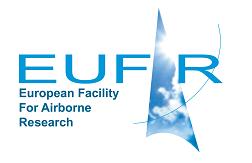Project

DEHESHyrE- Monitoring mass and energy fluxes in a manipulated Mediterranean tree-grass "Dehesa" ecosystem through the integration of ground and satellite data with airborne hyperspectral imagery
Abstract
An intensive global effort has been put into modelling carbon and water exchanges between the terrestrial biosphere and the atmosphere. Keenan et al (2013) have stressed the importance of analysing the ratio of water loss to carbon gain, or water-use efficiency, as this is a key characteristic of ecosystem function. Recent studies have shown the high potential of integrating ground, airborne-based and satellite observations to understand both the processes and the spatial scales governing the water and carbon cycles. However this integration remains a challenge, especially in ecosystems with complex vegetation structure as the "Dehesa"; a historical managed and integrated Mediterranean agro-forestry system which occupies large extensions in the Iberian Peninsula. It belongs to the class of tree-grass systems, which represent at least a third of the terrestrial land-surface. Despite their wide distribution, Earth observation systems and associated modelling have been so far poorly adapted to the key structural and functional characteristics of those systems (Pitman 2003). As a consequence, a significant uncertainty and bias in assessments of energy, carbon, water and biogeochemical dynamics has been often observed (Beringer et al. 2011). The objective of this EUFAR project is to better understand the contribution to the fluxes of both tree and grass layers, typical of these ecosystems, and the impact of large scale fertilisation on biophysical and functional properties. Due to the different phenology of tree and grass components, this objective will be achieved by acquiring high spatial resolution airborne hyperspectral optical and thermal data during two different seasons, spring and summer.
Details
| Keywords: | EUFAR, hyperspectral |
|---|---|
| Previously used record identifiers: |
No related previous identifiers.
|
Related Documents
| EUFAR project page |
| EUFAR Web page |
